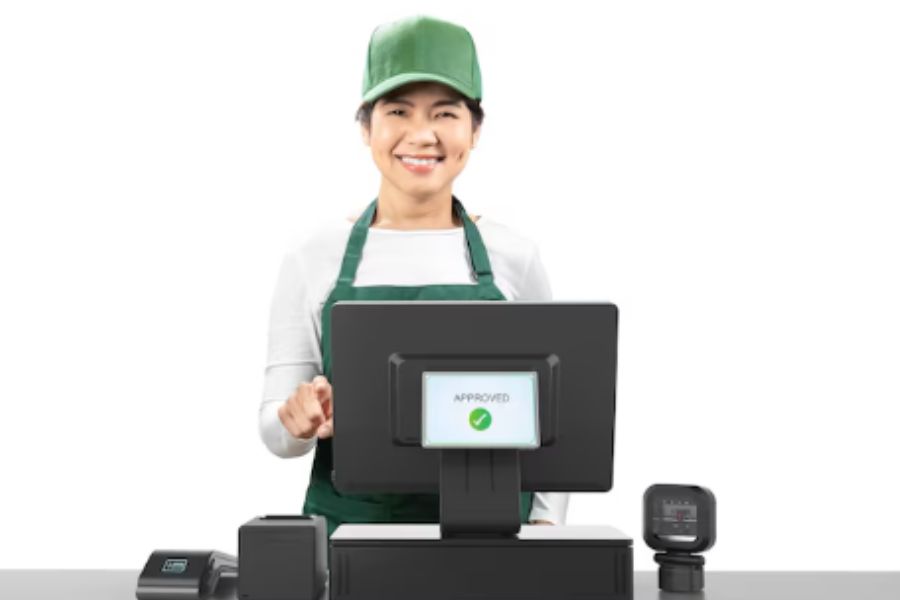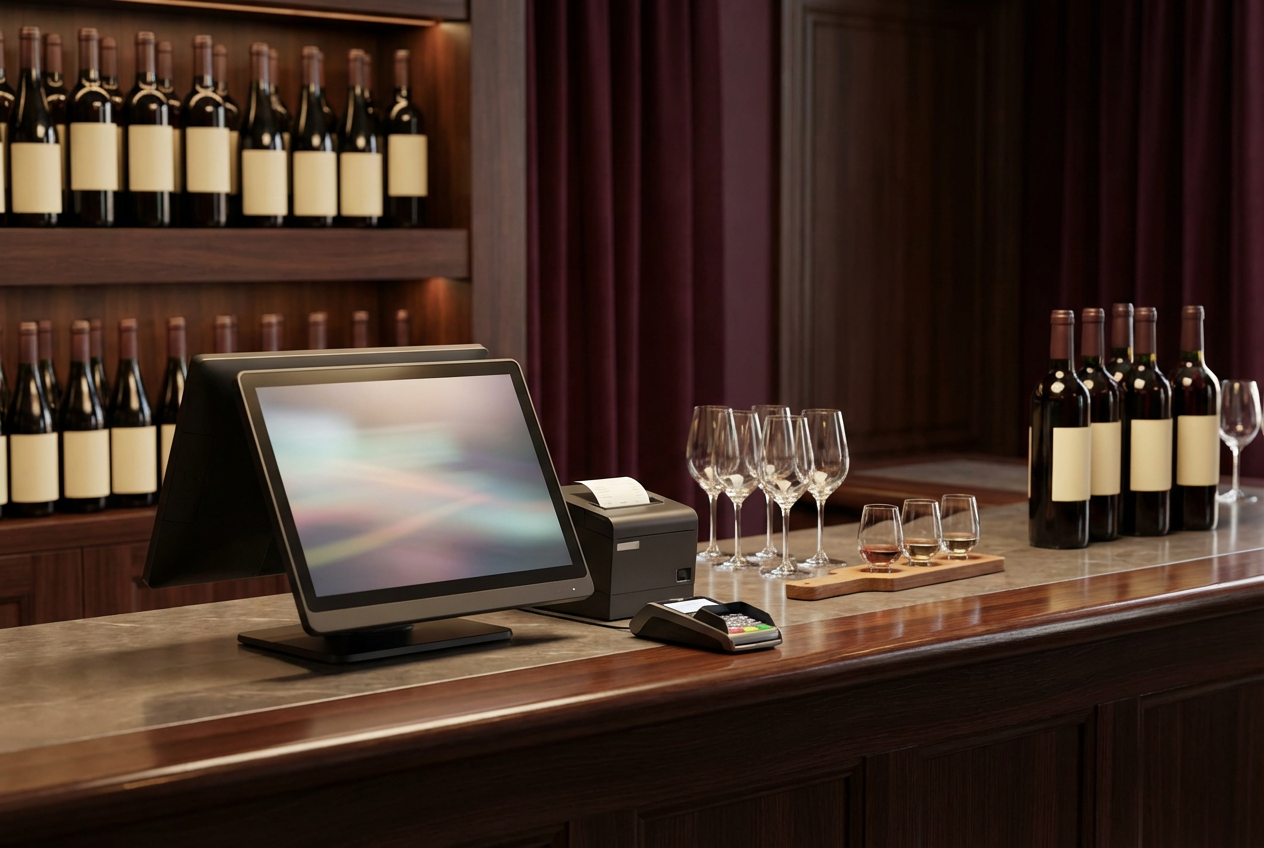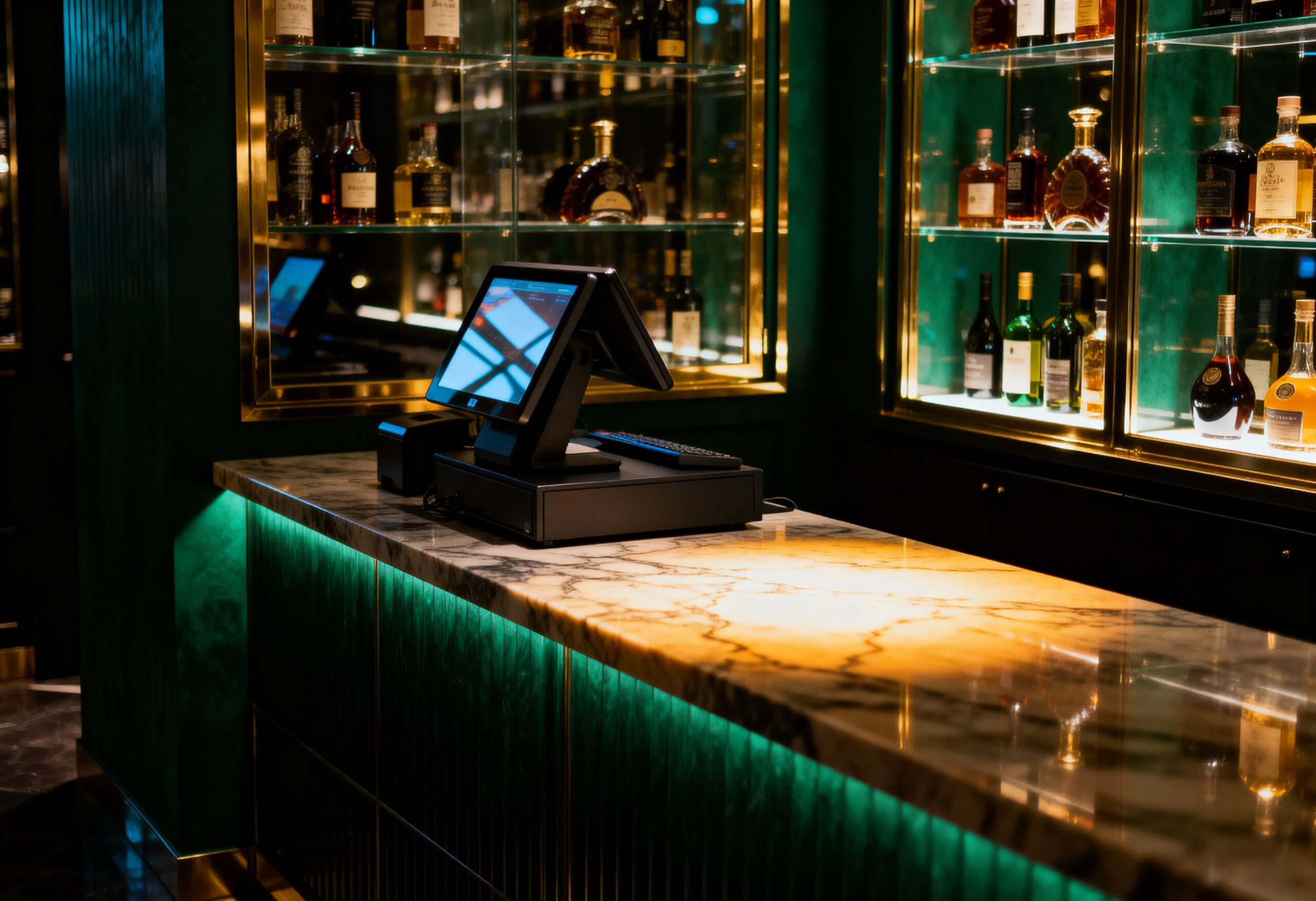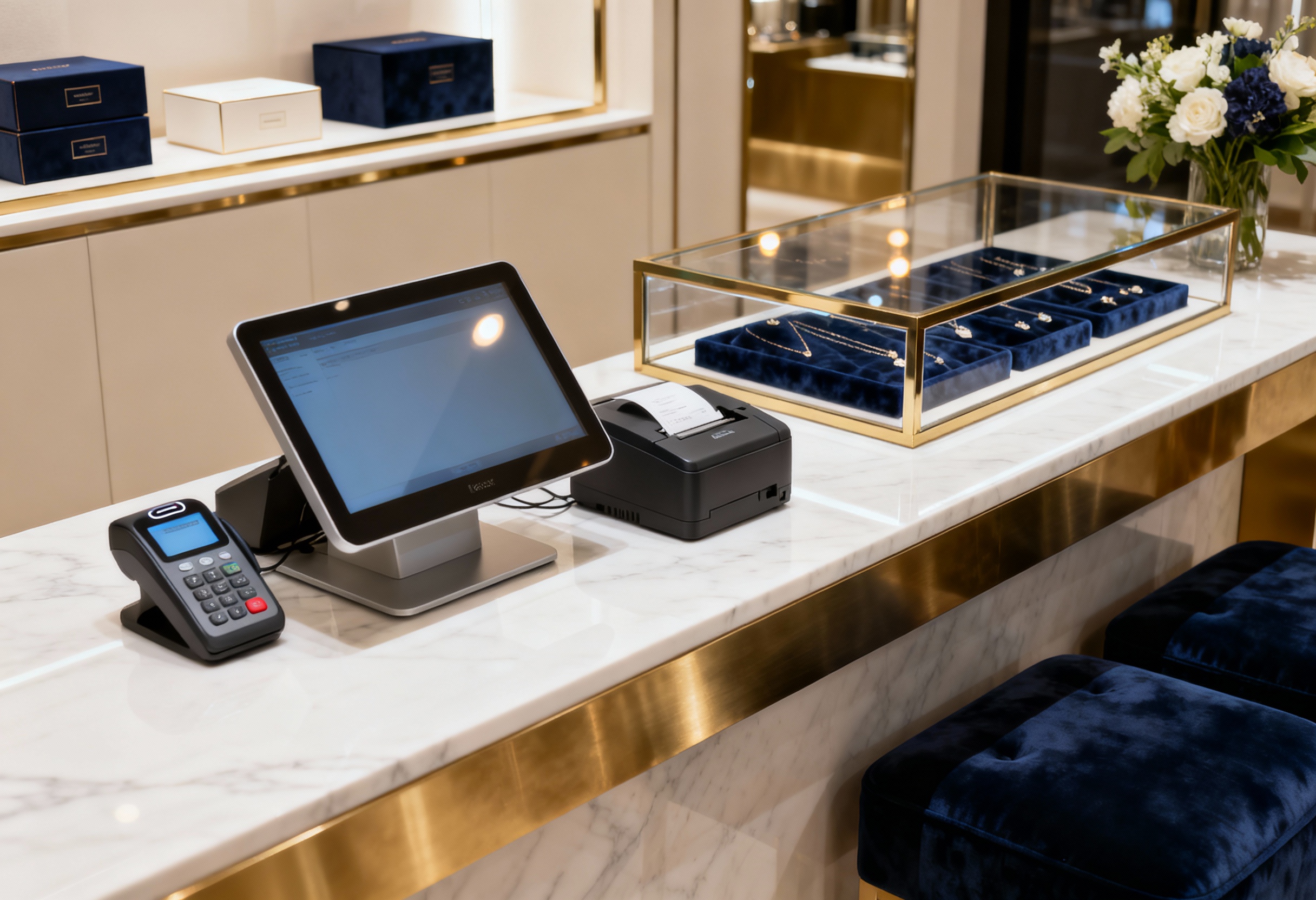You might be running more shops now than you ever imagined. You may also be exploring new channels. But controlling everything can feel like juggling many balls at once. That’s why a best multi store POS system becomes a lifeline for businesses that want to expand without stumbling. Let’s see what these systems do, who should use them, and how they kick retail growth into high gear.
Highlights:
- Scaling brands need consistent operations, real-time visibility, and tools that can handle growing sales channels without added complexity.
- A multi store POS system facilitates growing brands by centralizing inventory, unifying sales data, and streamlining workflows across all locations.
What Is a Multi Store POS System?
A multi store POS system is a retail tool that connects every store you own into a single backend. You can see all sales, inventory numbers, and staff actions from one place. You avoid confusion and get a broad view of daily moves.
Brands with multiple branches benefit the most from this arrangement. Franchises, chain retailers, and omnichannel sellers typically require a unified approach to stay competitive. A multi store setup helps them keep tabs on movement in each spot, whether it’s a flagship store or an online marketplace.
A ‘multi-store’ focus matters once you aim to scale fast. When new shops open or your online presence grows, a typical single-location system struggles. You don’t want to chase two dozen spreadsheets. You want everything in one tidy spot. That’s what a POS built for multi-location retail does best.
Key Reasons Multi Store POS Systems Can Support Brands Scale Effectively
1. Centralized Control Across All Locations
A multi store POS system becomes a main station for your entire operation. You adjust prices for every store at once. You update inventory across the board, even if you have a new pop-up in a faraway city. No more manual changes in each location. Time is freed for tasks that actually boost revenue.
Staff can see the same core data. That lowers errors. Everyone speaks the same language. Sales teams know the correct prices, and managers see updated stock counts. That consistent view sparks better service. When your brand grows, you want a straightforward structure, not multiple separate systems that create bottlenecks.
2. Real-Time Inventory Visibility
POS for multiple locations shows you precise stock levels. You’ll see item counts across every warehouse, store, or channel. You stop overstocking or understocking, because the data updates whenever a sale happens.
This clarity is useful for shipping orders fast and avoiding disappointed customers. When you see real-time numbers, you know if it’s safe to promise overnight delivery or if you must reorder soon. That also helps your staff quickly suggest alternatives if one product sells out. In a fast-growing setup, no one wants stale data.
3. Consistent Customer Experience Everywhere
Many shoppers expect consistency, whether they show up on your website or walk into your store. A multi store point-of-sale system links your brand identity with a single approach. Same promotions, same loyalty balances, and same item details across all branches.
Picture a customer who shops online, then visits your local store. They expect that item they saw online to be the same price with the same discount code. This approach ensures that unity. It keeps customers happy and fosters trust in your brand.
►►► Optimal solution set for businesses: Multi store POS, Next-gen POS, Inventory Management Software (MSI), Self Service, Automation, Backorders
4. Unified CRM and Loyalty Programs
Brands that scale often rely on loyalty programs to cultivate a steady stream of returning customers. A multi store POS system merges loyalty details from all sites. Clients can earn or redeem points at any branch.
This shared POS CRM means staff can see purchase histories, notes, and preferences from every store. You can greet a VIP by name, even if they shopped at another city last time. That personal touch goes a long way. Plus, you can design promotions around these insights.
5. Operational Efficiency Without the Chaos
When you have many branches, day-to-day tasks can balloon into chaos. A POS setup for multiple stores trims the inefficiencies. No separate spreadsheets or different software for each store. One interface covers them all.
Staff training also speeds up. You don’t have to teach new hires different workflows in each branch. Everyone learns the same system, which lowers confusion. That’s key for a brand on the rise. You want consistent processes that let you add new shops smoothly.
6. Scalable Infrastructure for Future Growth
Growing businesses hate ripping out old systems whenever a new store opens. A multi store POS system is built to expand. You can add fresh store profiles, load new product lines, and link multiple warehouses as you scale.
This approach is vital for high-growth periods. Maybe you’re testing a new territory or launching a seasonal pop-up. With a robust multi store POS, you don’t need to scramble for new software. You just click a few times, and your new location is ready to roll.
6 Best Multi Store POS Systems Ranked
Let’s rank a few names that many scaling brands use. Each platform has pluses and minuses, but they all revolve around the multi-store approach. Keep your eye on the capabilities that fit your situation.
1. ConnectPOS – Built for Serious Scaling
ConnectPOS isn’t built for stores that ‘might’ grow someday. It’s made for businesses already scaling fast and needing a system that can actually keep up. From vape chains and fashion retailers to grocery & supermarket brands, ConnectPOS delivers full visibility, flexibility, and control across every store, warehouse, and channel. Every order, every transfer, every checkout gets tracked and synced, automatically.
Here’s what makes ConnectPOS a go-to choice for scaling retail operations:
- Real-time, cloud-based inventory sync across multiple locations: Products update live across all stores, warehouses, and online platforms. There’s no lag, no miscounts. Staff can search by name, SKU, or barcode and know exactly what’s in stock anywhere.
- Smart order routing for omnichannel fulfillment: Whether it’s click-and-collect, ship-from-store, or local delivery, ConnectPOS routes orders intelligently. It taps into all stock sources to find the fastest way to fulfill, with built-in rules and custom settings.
- Offline mode with automatic sync: When the internet cuts out, sales keep running. Orders are processed locally and sync automatically once the connection returns, with no data loss, no rework.
- Powerful promotion engine for each region/store: Launch tailored discounts or limited-time deals per location. The system supports region-specific pricing, bundled offers, and complex discount logic, without code.
- Staff permissions by location: Set different access levels for each team member depending on store, role, or device. You control who can do what and there’ll be no room for mistakes.
- Multi-device compatibility: desktop, tablet, mobile: Use iPads in-store, desktops at the warehouse, or mobile phones at events. The UI adjusts to any device, and self-service kiosks or barcode scanners plug right in.
- Direct integrations with Magento, Shopify, BigCommerce, WooCommerce, and marketplaces: Native integrations with Magento POS, Shopify POS, BigCommerce POS, and WooCommerce POS mean no more middleware. Sync products, orders, and customer data in real time.
- Custom POS interface by location: Each store receives a layout tailored to its operational needs. Whether you want different button layouts, workflows, or languages, the POS adjusts store by store.
- Multi-warehouse and stock transfer support: Easily move inventory between locations, track transit stock, and balance levels across warehouses. Ideal for retailers juggling bulk goods or seasonal demand shifts.
- Advanced analytics and BI dashboards for HQ: Real-time report & analytics insights let the head office track sales trends, team performance, and inventory turnover. Use historical data to plan, forecast, and grow smarter.
2. Square – Best for Simplicity and Speed
Square is often the default for smaller shops that want to open new branches. Setup is straightforward. The system has a free plan that covers basic tasks. For a scaling business with moderate inventory, Square handles a second or third store well.
You can track stocks, basic customer info, and daily sales on their dashboard. It’s not as deep as some others, but the user-friendly nature is a big plus. Hardware, like the Square Reader or terminal, is easy to manage. If you’re just branching out, Square is a valid stepping stone.
3. Lightspeed – Ideal for Inventory-Heavy Businesses
Lightspeed is known for robust product matrices. If you juggle many variants (like shoe sizes or multi-color outfits), Lightspeed organizes them nicely. It’s popular with apparel retailers, sports gear shops, and specialty brands that track big catalogs.
You can use vendor catalogs, purchase ordering tools, and reorder notifications. That synergy helps multi-store businesses that want to see product levels across branches. Lightspeed also has a pleasing interface for employees, so training won’t take ages.
4. Shopify POS – Great for Omnichannel Sellers
Shopify has become a big name in eCommerce, but it’s also pushing forward with in-person tools. If you already have a Shopify store online, you can unify everything with Shopify POS. It’s a simple route to match your website’s data with your physical checkout.
All orders and customers sync, so if someone orders online for pickup, staff see it in real time. That blend is super handy for stores that lean heavily on the web. But note that you’ll need a subscription to Shopify’s eCommerce plan plus the POS add-on. For a brand with a thriving Shopify site, though, that cost might be worth it.
5. Clover – Strong Expansion Hardware Ecosystem
Clover offers a wide array of devices: from a tiny handheld card reader to a bigger station for the counter. If your brand needs multiple hardware setups for different branches, Clover has you covered. The interface is pretty direct, so staff can handle quick checkouts with minimal fuss.
Inventory and custom reports are decent, though not as thorough as some. Yet the real appeal is the hardware variety. You can scale from a mobile pop-up setup to a full-blown store kiosk. That can fit a brand that’s testing new locations often.
6. Epos Now – Affordable for Startups Adding Locations
Epos Now appeals to smaller businesses wanting a one-time hardware and software bundle. You pay upfront for a terminal, then pay a subscription to keep advanced tools active. It’s especially suitable for startups that want a simpler system plus basic stock tracking.
They have CRM components too, so you can store info about loyal buyers. The system may not handle large catalogs with the same finesse as Lightspeed or ConnectPOS, but it’s sufficient for moderate expansions. If your budget is tight, Epos Now is worth a look.
Key Features to Look For in the Best Multi Store POS System
1. Cloud-Based Management Access
You want the ability to log in anywhere and see real-time data. Cloud-based systems remove the guesswork and let you adjust on the fly.
2. Real-Time Sales and Inventory Tracking
When a purchase happens in one store, the rest must update. That synergy prevents overselling or confusion at other spots.
3. Location-Level Reporting and Analytics
Make sure you can slice data by each branch. This helps you see which location is thriving or which store needs a new approach.
4. Ecommerce Integration (Magento, Shopify, etc.)
A best multi store pos system merges in-person sales with online channels. Shared inventory is crucial for an omnichannel brand.
5. Staff Management Across Stores
You want flexible permissions. Different roles need different views. Also, check if it tracks staff performance, timecards, or sales stats.
6. Product and Promotion Customization by Store
You might run a clearance sale in just one location. Or you might push a region-specific bundle. Look for that flexibility in your multi store POS.
FAQs: Best Multi Store POS System
1. Do I need different POS setups for each location?
No, not when you use a true multi store POS. You can manage all sites under one backend. Then you can tweak user permissions or product catalogs if needed for each branch.
2. What happens if the internet goes down at one store?
You want a system with an offline mode. That means transactions continue, then the data syncs automatically once you reconnect. This prevents panic or missed sales.
3. Can I manage customer loyalty across stores?
Yes. Many multi store POS solutions unify loyalty points or memberships. So shoppers can earn or redeem wherever they go. It’s a big perk for brand consistency.
Final Thoughts
Picking the best multi store POS system can transform how your brand expands and engages. You want a setup that unifies every location, updates stock in real-time, and keeps loyal customers coming back.
ConnectPOS does all that and more. It merges your online channels and offline counters so you can scale without complications. Ready to see how it drives growth? Reach out to us, and watch your retail vision unfold without barriers.
►►► Optimal solution set for businesses: Shopify POS, Magento POS, BigCommerce POS, WooCommerce POS, NetSuite POS, E-Commerce POS



